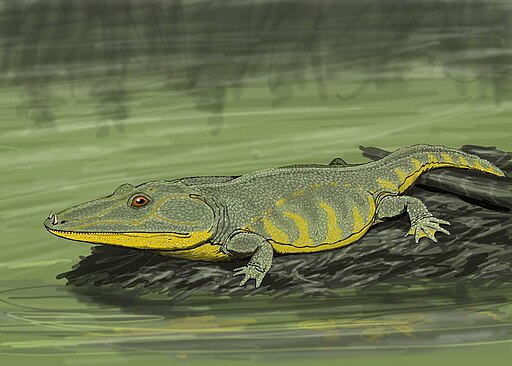Mastodonsaurus was a large, prehistoric amphibian that lived during the Triassic period, approximately 240 to 210 million years ago.

| Meaning | Breast tooth lizard [Masto-don-saurus] |
| Pronunciation | MAS-to-don-sore-us |
| When: | Middle Triassic (about 247–237 million years ago) |
| Where: | Europe (Germany), Africa (Morocco) |
| What: | Amphibian Temnospondyl amphibian |
| Weight: | Estimated around 1 metric ton |
| Length: | Approximately 6 meters (20 feet) |
| Diet: | Carnivorous (ate fish and other small aquatic animals) |
| Discovered: | First described by Georg Friedrich von Jaeger in 1828 |
These creatures were among the largest amphibians to have ever lived, with some species reaching lengths of over 4 meters (13 feet).
Mastodonsaurus had a robust body, short limbs, and a broad, flattened skull with sharp teeth suited for catching fish and other small aquatic prey.
They lived in freshwater environments such as lakes and rivers, where they likely ambushed their prey from the water’s edge.
Mastodonsaurus is notable for its unique appearance among prehistoric amphibians and its role in the ecosystems of the Triassic period, providing valuable insights into the diversity and adaptation of early amphibious life forms.
